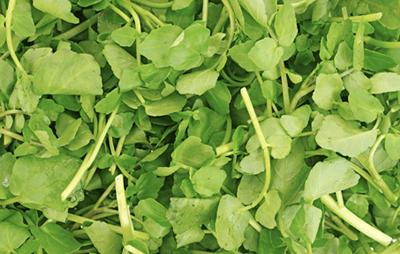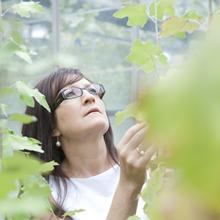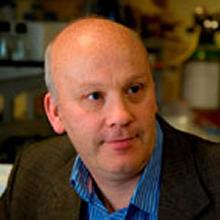Celebrating new watercress varieties for flavour and health

A team of researchers from the University of Southampton will be attending The Watercress Festival in Alresford this weekend (Sunday 15 May) to talk about their latest work in developing new watercress varieties.
Few foods have their own festival but The Watercress Festival is an annual event that routinely attracts more than 15,000 visitors, where celebrity chefs demonstrate their latest recipes and the world watercress eating championship is hosted.
Southampton scientists, funded by Vitacress Salads and Sainsbury’s, under the leadership of Professor Gail Taylor from Biological Sciences have spent the last ten years working to find new wild watercress varieties, currently not grown for the UK market. One of these, registered as ‘Boldrewood’, is a dwarf type that has a sweeter taste, but still maintains the concentration of a plant ‘stress’ chemical – glucosinolate – that when chewed, releases PEITC that is known to halt the progress of cancer tumour growth.
The new watercress is currently being trialled but early findings look promising, with a research paper1 that identifies the exact gene expression differences between ‘Boldrewood’ and the watercress currently available in the supermarkets. ‘Boldrewood’ has a promising future for those who prefer a tiny sweeter leaf.
Professor Taylor says: “Watercress has been cultivated in the UK since 1808, with a particular focus in Hampshire and very little has changed – watercress prefers highly alkaline water and can be picked through much of the year. It is a valuable addition to any plate being the most nutrient dense of any vegetable – packed full of vitamins A and C, calcium and most importantly glucosinolate. This gives watercress the peppery flavour with which we are all familiar. Interest in eating watercress has grown in recent years, as links between diet and health have emerged.”
At the same time, the group has gone back to old-fashioned plant breeding and selection and made new crosses between different watercress types to come up with a whole array of leaves that are now being investigated for their chemo-preventative (anti-cancer) properties. The collection has large potential to deliver new types of watercress to the UK supermarket and research is on-going with leading cancer geneticist Professor Graham Packham from Medicine to ensure the health benefits of watercress are optimised in the new varieties going forward for further selection and breeding.
Another research paper2, with Dr Mark Chapman and PhD student Nikol Voutsina, has sequenced more than 300 million base pair reads and provided the first transcriptomic dataset for watercress, with more than 48,000 genes identified. These differ in their expression suggesting that large variation exists across the watercress collection and that it is likely that further varieties will be made available to the UK consumer.
References:
1. Payne AC, Clarkson GJJ, Rothwell S and Taylor, G (2015). Diversity in global gene expression and morphology across a watercress (Nasturtium officinale) germplasm collection: first steps to breeding. Horticulture Research 2: doi: 10.1038/hortres.2015.29
2. Voutsina N, Payne AC, Hancock RD, Clarkson GJJ, Rothwell S, Chapman MA, Taylor G (2016). Characterization of the watercress (Nastursium officinale R. Br.; Brassicaceae) transcriptome using RNASeq and identification of candidate genes for important phytonutrient traits linked to human health. BMC Genomics (In Press).
Links to external websites
The University cannot accept responsibility for external websites.


